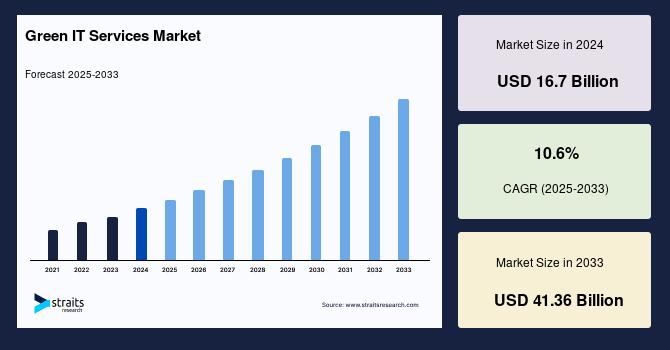Entergy Mississippi customers can upgrade to energy-efficient products and save – Entergy

Report on Entergy Mississippi’s Contribution to Sustainable Development Goals through Energy Efficiency Programs
Program Overview
Entergy Mississippi’s “Entergy Solutions” initiative facilitates the adoption of energy-efficient products and practices among residential customers. The program provides a framework for reducing energy consumption and associated costs, directly contributing to several key United Nations Sustainable Development Goals (SDGs).
Alignment with SDG 7: Affordable and Clean Energy
The program directly addresses SDG Target 7.3, which aims to substantially increase the share of renewable energy and double the global rate of improvement in energy efficiency. Key contributions include:
- Promoting Energy-Efficient Technologies: Incentivizing the replacement of inefficient items with modern, energy-saving alternatives such as smart thermostats, advanced power strips, and air purifiers.
- Enhancing Access to Efficient Appliances: Offering financial incentives of up to $750 for the purchase of high-efficiency refrigerators, clothes washers and dryers, and heat pump water heaters, making sustainable technology more affordable.
Contribution to SDG 11: Sustainable Cities and Communities
The initiative supports the creation of more sustainable and resilient housing, in line with SDG 11’s goal to make human settlements inclusive, safe, resilient, and sustainable. Mechanisms for achieving this include:
- Improving Household Energy Performance: On-site Home Energy Assessments conducted by experts provide actionable recommendations to reduce residential energy usage and enhance comfort.
- No-Cost Efficiency Upgrades: During assessments, experts may install items like advanced power strips and faucet aerators at no additional cost, immediately improving a home’s resource efficiency and sustainability.
Supporting SDG 12: Responsible Consumption and Production
The Entergy Solutions program encourages sustainable consumption patterns, a core component of SDG 12. This is facilitated through:
- The Entergy Solutions Marketplace: A centralized online platform offering a curated selection of energy-saving products with instant incentives, guiding consumers toward more responsible purchasing decisions.
- Financial Incentives: The provision of rebates and discounts makes the sustainable choice the economically advantageous choice, driving market transformation toward efficient products.
Impact on SDG 13: Climate Action
By reducing energy demand at the consumer level, the program contributes to climate change mitigation efforts as outlined in SDG 13. Specific actions with climate benefits are:
- Reduced Energy Consumption: Upgrading to efficient HVAC equipment and performing regular A/C tune-ups lowers overall electricity consumption, thereby reducing the carbon footprint associated with power generation.
- Systematic Energy Reduction: Comprehensive home assessments identify multiple opportunities for energy savings, leading to a cumulative reduction in greenhouse gas emissions.
Summary of Program Services
The following services are available to residential customers to promote energy efficiency and support sustainability goals:
- Product Marketplace: An online store for energy-saving products like smart thermostats and advanced power strips, featuring instant incentives.
- Appliance Rebates: Online incentives of up to $750 for qualifying energy-efficient refrigerators, clothes washers, dryers, and heat pump water heaters.
- A/C Tune-Up: A service to ensure high-efficiency performance of air conditioning units during periods of high demand.
- Home Energy Assessment: An on-site evaluation by an energy expert to identify savings opportunities, complete with recommendations and potential installation of no-cost efficiency products.
Contact and Further Information
For comprehensive details on the Entergy Solutions programs, stakeholders are directed to visit entergysolutionsms.com or call 844-523-9980.
1. Which SDGs are addressed or connected to the issues highlighted in the article?
The article on Entergy Mississippi’s Entergy Solutions programs connects to several Sustainable Development Goals (SDGs) by promoting energy efficiency at the household level. The primary goals addressed are:
-
SDG 7: Affordable and Clean Energy
This is the most directly relevant SDG. The article focuses on “reducing energy consumption” and making energy-efficient upgrades “affordable” through incentives. This aligns with the goal of ensuring access to affordable and sustainable energy by improving energy efficiency.
-
SDG 11: Sustainable Cities and Communities
By encouraging homeowners to reduce their energy usage, the program contributes to making communities more sustainable. Widespread adoption of energy-efficient practices reduces the overall energy demand of a city or region, lessening the strain on infrastructure and lowering the community’s environmental footprint.
-
SDG 12: Responsible Consumption and Production
The program directly promotes responsible consumption patterns. It incentivizes consumers to move away from “inefficient items” and choose “energy-efficient products” like smart thermostats, efficient appliances, and advanced power strips, thereby fostering more sustainable consumption habits.
-
SDG 13: Climate Action
Improving energy efficiency is a critical strategy for climate change mitigation. By helping customers “reduce energy usage,” the program helps lower the demand for electricity, which is often generated from fossil fuels. This reduction in energy consumption leads to a decrease in associated greenhouse gas emissions, directly contributing to climate action.
2. What specific targets under those SDGs can be identified based on the article’s content?
Based on the programs and goals described in the article, the following specific SDG targets can be identified:
-
Target 7.3: By 2030, double the global rate of improvement in energy efficiency.
The entire premise of the Entergy Solutions program is to accelerate the adoption of energy-efficient technologies and practices. The article’s call to “upgrade to energy-efficient products” and services like the “Home Energy Assessment” are direct actions aimed at improving energy efficiency at the consumer level, contributing to this target.
-
Target 11.6: By 2030, reduce the adverse per capita environmental impact of cities.
The program helps households lower their individual energy consumption. This collective action reduces the per capita environmental impact of the communities Entergy serves, as residential energy use is a significant component of a city’s overall environmental footprint.
-
Target 12.2: By 2030, achieve the sustainable management and efficient use of natural resources.
Electricity is a product derived from natural resources (like natural gas, coal, or renewables). The program’s focus on “reducing energy consumption” and replacing “inefficient items” directly promotes the more efficient use of these underlying resources.
-
Target 13.2: Integrate climate change measures into national policies, strategies and planning.
While the program is a corporate initiative, it represents a strategy that aligns with and contributes to broader climate goals. Such utility-led demand-side management programs are a key measure for regions and nations to meet their climate change mitigation targets.
3. Are there any indicators mentioned or implied in the article that can be used to measure progress towards the identified targets?
The article does not cite official SDG indicators, but it implies several practical metrics that can be used to measure progress towards the identified targets. These are:
-
Uptake of Energy-Efficient Products
Progress can be measured by tracking the number of “energy-saving products” purchased through the program, such as “smart thermostats, advanced power strips, air purifiers,” and larger appliances like “refrigerators, clothes washers and dryers, and heat pump water heaters.”
-
Participation in Energy-Saving Services
The number of customers who sign up for services like the “A/C Tune-Up” and the “Home Energy Assessment” serves as a direct indicator of engagement with energy efficiency measures.
-
Reduction in Household Energy Consumption
The primary outcome mentioned is to “reduce energy usage” and “reduce energy consumption.” This can be measured by analyzing the aggregate change in electricity consumption among participating households compared to non-participating ones or their own historical usage.
-
Financial Savings for Consumers
The article highlights “instant and long-term savings” and the ability to “save money.” Tracking the total value of incentives claimed (e.g., “incentives of up to $750”) and the estimated bill savings for customers would be a key performance indicator of the program’s success and its contribution to energy affordability (SDG 7).
4. Table of SDGs, Targets, and Indicators
| SDGs | Targets | Indicators (Identified from the Article) |
|---|---|---|
| SDG 7: Affordable and Clean Energy | Target 7.3: Double the global rate of improvement in energy efficiency. |
|
| SDG 11: Sustainable Cities and Communities | Target 11.6: Reduce the adverse per capita environmental impact of cities. |
|
| SDG 12: Responsible Consumption and Production | Target 12.2: Achieve the sustainable management and efficient use of natural resources. |
|
| SDG 13: Climate Action | Target 13.2: Integrate climate change measures into policies, strategies and planning. |
|
Source: entergy.com

What is Your Reaction?
 Like
0
Like
0
 Dislike
0
Dislike
0
 Love
0
Love
0
 Funny
0
Funny
0
 Angry
0
Angry
0
 Sad
0
Sad
0
 Wow
0
Wow
0































_1.png?#)














































